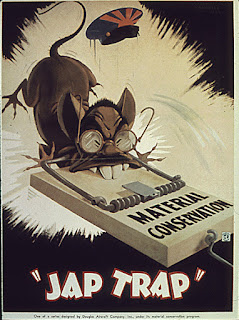A writer's goal is always to present information that entices, hooks, or interests his/her reader. Biographies are true or based on true/real stuff. Biographies are meant to inform, but should also entertain a reader. Subjects are complicated. The need to research a subject when writing a biography often gives reporters and writers pause. There's a lot of research and footwork that has to be done before you're ready to put pen to paper.
Our goal for this project is to research and write part of a subject's story--and to represent this subject in a fair light. We cannot excuse the horrible things these subjects did, but as we dramatize our biography "chapter", we should take a few bits of advice on how to tackle this difficult problem.
1. Prepare to write by conducting your research first.
2. As you research, narrow your focus (or thesis, if you like that word better). In journalism we refer to this as your "angle"--the objective of the chapter you are writing. Ask yourself: what am I trying to do as I write this chapter? Answers may include: entertain, inform, persuade, reflect, connect two ideas, warn, promote an idea, set a tone, describe a setting, describe a situation, tell a story, create suspense, etc.
3. Keep an open mind: don't think you'll understand everything there is to know about your subject. For this project, focus in on a topic, but don't worry about writing a real "chapter of a book" since writing biographies or exposes may take months to years to write correctly. How much is enough? Yes. You have to decide that based on your writing skills, your attention span, your time constraint, and your ability.
4. When looking for that angle or hook, focus on what's most compelling or interesting. What surprises you, what makes you think, what makes you question, what makes you uncertain, what makes you angry or sad or delighted? If it's the grisliness of a subject's murders, then focus on that. If it's the court case surrounding the issue, then work on that. If it's a burning question about the nature of humanity, go for that...etc.
5. Show, don't tell. Primary writing advice. Use it. Use imagery and clear diction as opposed to vague diction and poor writing. Transport your reader--take us with you as you walk down that dark corridor in the shoes of your subject. Metaphors/similes, figurative language, allusions, diction, etc. can all help build imagery.
6. Put your story in context. What's happening in the world when your subject is doing what your subject is doing? Reconnect with the reader to answer: "Why should I care?"
7. Write a STORY: that means there's a hook or inciting incident to your chapter, rising action, conflict, a crisis perhaps, a climax, a resolution or conclusion to your work.
8. Don't be afraid to research OUTSIDE of the topic. Knowing what's going on around the subject or at the same time the subject is living can be helpful in understanding why he/she did the horrible things he/she did. Biographers report that Stalin, for example, started off strong and well liked--then after WWII, something happened. Knowing how the war affected him might be helpful in understanding the monster. Same thing with Mao. Probably with others as well.
9. At some point you have to say enough is enough. Use the lab time today to wrap up your research so that next class you can begin writing. It IS OKAY to go back to your research if you need to during the writing process. If you can't wait and have a good idea how to start your "chapter" then go ahead and write today. Again, research isn't just something you do once. Writers research and continue to research throughout the writing process!
10. You will succeed at this assignment. Remember that.
Things to remember about reporting:
- Attribute your sources
- Outlining and other effective note taking strategies should HELP you accomplish your task
- Direct quotes and facts can be helpful, but don't overuse them
- Fill in the holes by using transitions, predictions, or general well-thought-out assumptions--but alert your reader that you are filling holes that might exist. Example: Records about Jesus' childhood are scarce, but it is safe to assume he likely learned his father's trade in Carpentry--building things, like houses, nations, worlds. Jesus was a builder of the soul as much as he was a craftsman.
- Journalists attempt to answer the key questions: who, what, where, when, how, why. Just remember that.
HOMEWORK: Complete your biographies. Use them as models for fine writing. Complete research and decide on an angle for your project. If you did not start writing today, you will want to next class. Prepare for that.



























